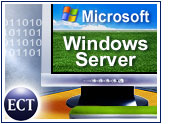
As operating system migration has become more of an issue, particularly for Microsoft administrators, the company has responded by releasing a beta version of Virtual Server 2004, which promises to pave a gentle migration path to Windows Server 2003 while working with older Microsoft Windows NT 4.0 and Windows 2000 operating systems.
While the company announced a delay of the product release to the middle of this year, it did make available a beta version of Virtual Server 2004 — intended to allow server consolidation, high availability, flexibility and scalability — to selected testers this week.
The Virtual Server software, created out of Microsoft’s year-old acquisition of virtualization software maker Connectix, is designed to aid in server consolidation and cost savings, Microsoft said. The company outlined several enhancements to software, including improved security, increased memory and support for SCSI drives and clustering.
Yankee Group senior analyst Dana Gardner told TechNewsWorld that Virtual Server is an effort to address the variety of systems — by age as well as vendor — used in typical enterprise data centers today. “Organizations are generally grappling with what they consider the pain of heterogeneity,” Gardner said. “Things don’t work well without a lot of hand-holding.”
Looking Back and Ahead
Microsoft, while making this week’s announcement somewhat behind its own previous schedule for Virtual Server 2004, is positioning the product as a way to continue using legacy systems and applications and as a guide to newer operating systems that will help administrators consolidate their networks and save costs.
Microsoft said Virtual Server 2004 supports all versions of Windows Server 2003, including standard and enterprise versions. Virtual Server 2004 can use Windows Server 2003 as its host operating system in conjunction with Internet Information Services (IIS).
Analysts such as Gardner have indicated there is demand for the Virtual Server, which Microsoft hopes will spur migration from its aging NT and 2000 software as companies seek to reduce the cost of upgrades and eliminate network heterogeneity.
Vetting Virtual Server
Microsoft, which did not disclose pricing plans for the Virtual Server software, said it has put the new version of the software through a security review and added many new features and functions.
Key among those enhancements are access control list (ACL) security, support for systems with up to 64 GB of memory and support for clustering failover mechanisms.
The company, which released Virtual PC 2004 and Virtual PC for Mac last year, is touting Virtual Server’s interface, which aims to streamline routine administrator tasks, such as regular scripting jobs. The Virtual Server 2004 software also provides limited support for alternative x86 systems, including Linux.
Microsoft Shop Problems
Gardner said that while there is a lot of attention being paid to the challenges associated with running heterogeneous IT environments that mix Microsoft, Linux and other platforms, there are also consequences as a result of the diversity of software systems and applications that come from the same vendor, particularly in the case of Microsoft.
“Since about 2000, it has been a more prominent problem in the Microsoft shop,” Gardner said. “The migration from NT to 2000 and beyond — it was really a full migration, not necessarily an upgrade.”
The issues that come up are “almost as great as the issues of heterogeneity across entirely different platforms,” Gardner added.




















































